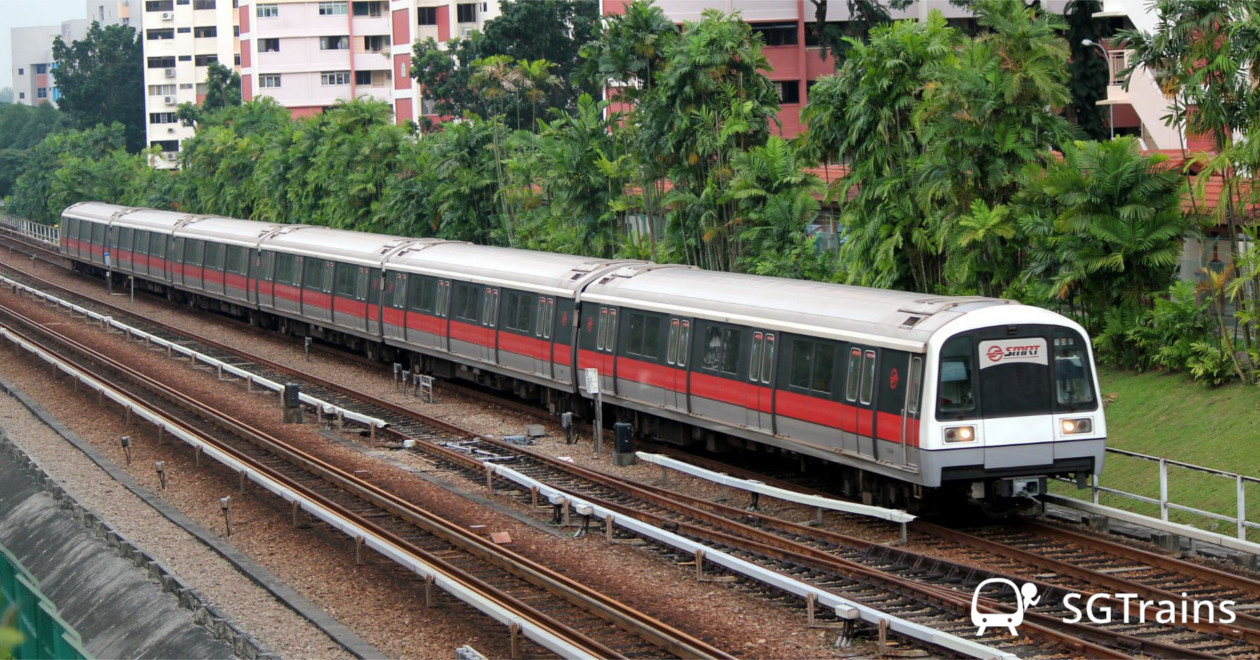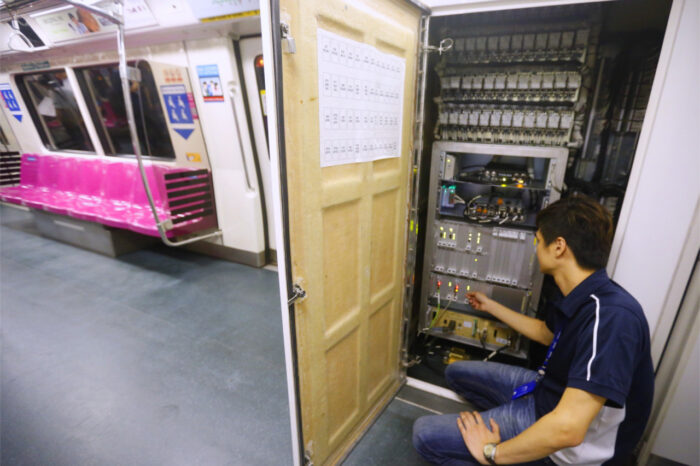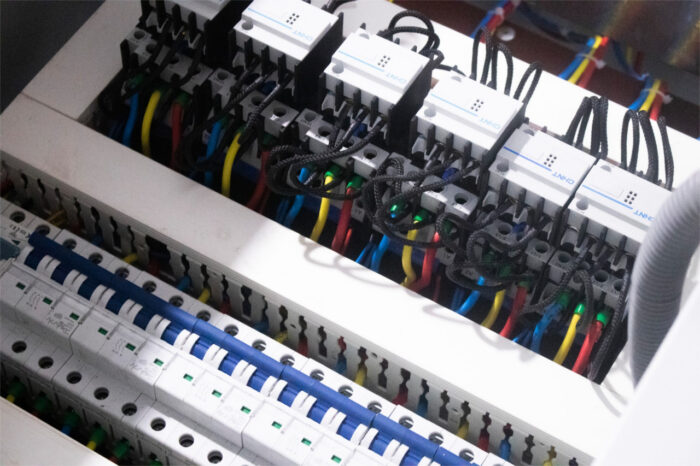
A 1st-gen Kawasaki Heavy Industries C151, the same train type that was involved in the train fault on Wednesday (Feb 22). (Image: SGTrains File)
A train fault near Yishun MRT station on the North-South Line (NSL) caused a lengthy 60-minute train service delay, prompting the operator to advise commuters of additional 25 minutes of travelling time on Wednesday (Feb 22) morning.
What is a train-borne Vehicle On-Board Controller and how can a hardware issue cause it to freeze, which results in a safety feature immobilising the train that day?
Interested in reading our future posts?
Follow us on Facebook, Instagram and Telegram to get the latest updates!
Train Fault Delays North-South Line for 60 Minutes
What is a Vehicle On-Board Controller (VOBC)?

The Vehicle On-Board Controller (VOBC) of the Communications-Based Train Control (CBTC) signalling system installed in an MRT train. (Image: Ernest Chua/TODAY)
The Vehicle On-Board Controller (VOBC) is a vital component of the Communications-Based Train Control (CBTC) signalling system equipment fitted on every MRT train.
According to Thales, the signalling system supplier for NSL and East-West Line (EWL) trains, the VOBC controls propulsion, braking, travelling direction, door operations, and target/safety speed enforcement of the train.
Each MRT train has two VOBCs, one on each end, in a “hot-standby configuration” where the front VOBC is usually the active one, while the other VOBC is passive, providing redundancy should one VOBC fails by seamlessly switching to the other available VOBC.
The VOBC also reports identified faults and will not hesitate to command the emergency brakes when it detects something amiss to prevent any accidents from happening.
SEE ALSO: How Did Faulty Track Point Device Cause 6-Hour Train Service Disruption? »
How can a Hardware Issue cause the VOBC to freeze?
Rail operator SMRT pinpointed that an electrically-operated switch – known as a relay – had caused both VOBCs on the 1st-gen Kawasaki Heavy Industries C151 train to stop working that morning.
It is not mentioned how the faulted relay can cause both VOBCs to freeze, but, putting it into layman’s terms, think of the relay as your household extension cord and the VOBC as your desktop computer, such that both are connected together.
When your household extension cord experiences an electrical surge from a thunderstorm and becomes faulty after, assuming there is no power surge prevention, it can damage or malfunction your desktop computer.
A similar phenomenon may have happened that morning with the faulty relay, freezing not one but both VOBCs on the train, effectively causing the train to become disabled as there is no more redundant VOBC available to take over.
SEE ALSO: What Happens When New Trains Begin the Dynamic Testing Phase? »
Frozen VOBCs resulted in a Safety Feature kicking in?

Two 6-car MRT trains, one stalled and one assisting, undergoing a 12-car rescue operation. (Image: Screengrab from SMRT/YouTube)
Reiterating what was mentioned earlier, the VOBC also reports identified faults and will not hesitate to command the emergency brakes when it detects something amiss.
However, that only applies when there is still one working VOBC available, as both VOBCs have frozen and malfunctioned in this incident.
As such, when both VOBCs are unavailable to be employed for usage, there is still a failsafe safety feature that the train falls back onto which commands the emergency brakes.
The lengthy train service delay most likely stemmed from the inability to move the disabled train – still with emergency brakes applied – while it awaited the assisting train to arrive before the 12-car rescue operation commenced.
Spanning almost a 60-minute long delay, it can be apparent that most of the time taken would have been to safely disable the emergency brakes and to have the disabled train pulled by the assisting train back to the nearest Bishan Depot.
SEE ALSO: How did a safe MRT system indirectly cause delays? »
Interested in reading our future posts?
Follow us on Facebook, Instagram and Telegram to get the latest updates!
Check Out Other Related Posts
How Did Faulty Track Point Device Cause 6-Hour Train Service Disruption?
What Happens When New Trains Begin the Dynamic Testing Phase?
Related Links
Train Service Status – SGTrains
Signalling System – SGTrains
North-South Line – SGTrains
Kawasaki Heavy Industries C151 – SGTrains
External Links
“Our investigations have identified that this morning’s train fault was caused by a train-borne signalling hardware issue.” – SMRT/Facebook [Accessed 27 Feb 2023]
Thales technology selected for Vancouver SkyTrain fleet expansion – Thales Group [Accessed 27 Feb 2023]
What is Railway CBTC Equipment? – Railway Signalling Concepts [Accessed 27 Feb 2023]
The quest for system performance in Singapore re-signalling project – L Y Lam/LTA via IRSE NEWS | ISSUE 229 | January 2017 [Accessed 27 Feb 2023]
This Is My Story: An SMRT Train Captain – SMRT/YouTube [Access 27 Feb 2023]
Images: SGTrains File, Ernest Chua/TODAY, mostafa mahmoudi/Unsplash, Screengrab from SMRT/YouTube.
This article first appeared on SGTrains.
Interested in reading our future posts?
Follow us on Facebook, Instagram and Telegram to get the latest updates!

